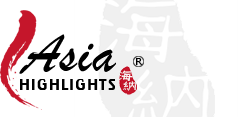Typhoons usually hit Japan during the summer and fall, usually from May to October.
The Okinawa Islands and Kagoshima region in the south are usually hit hardest by typhoons. Tokyo, Kyoto, and Osaka may get strong winds and heavy rains when typhoons hit. Northern regions like Hokkaido tend to have fewer and weaker typhoons.
Typhoons bring heavy rains and strong winds that can cause transportation cancellations. However, you can still visit Japan during typhoon season if you're prepared for any possible disruptions during your travels.

When is Japan's Typhoon Season in 2025?
Japan's typhoon season typically runs from May to October. The strongest typhoons typically happen in August and September, with around 2–3 typhoons hitting Japan within these months.
In the southern areas like Okinawa, typhoons can occur 6–7 times a year, while northern regions like Hokkaido experience fewer typhoons. Places like Tokyo, Osaka, Kyoto, and Nagoya usually face heavy rains and strong winds when typhoons pass through.
Which Areas Experience the Most Typhoons in Japan?
The Kyushu region, including Okinawa and Fukuoka, experiences the highest number of typhoons, followed by Shikoku (Kochi Prefecture). In contrast, inland areas such as Kyoto, Osaka, and Tokyo are generally less affected by typhoons. Hokkaido, located in the northern part of the country, is least affected by Typhoons.
In summary, the south is more affected by typhoons than the north. Generally, typhoon activity decreases as you travel further north.
How Bad Are Japan's Typhoon Months?
In the worst case, when a typhoon hits, you can expect heavy rains and strong winds. The rain can last from 3 days to half a day. This can lead to street flooding and high coastal tides. Transportation may be disrupted, with Shinkansen, trains, buses, attractions, and shops closing. You could face delays at train stations or airports, so be prepared.
However, most of the time, typhoons only bring storms to the southern coastal areas. In inland regions like Tokyo, Osaka, and Kyoto, they often result in heavy rains or cloudy days.
Can I Visit Japan during the Typhoon Season?
Yes, you can visit Japan during typhoon season, especially in inland regions where travel is generally safe. Typhoons typically can bring heavy rains. With proper preparation and a flexible schedule, your trip can still go smoothly.
When a typhoon arrives, there may be storms that could prevent travel between regions or keep you indoors for a day or two, as shops and attractions may close. Flights can be delayed or canceled, and Shinkansen trains might stop running, so a flexible itinerary is essential.
If the trains and flights will be suspended. Due to past experiences, transport companies and hotels are usually flexible and can easily reschedule bookings.
If you plan to visit Japan's southern regions like Okinawa, it's advisable to adjust your travel dates, as these areas are more severely affected.
Which Areas Should Be Avoided When There Is a Typhoon in Japan?
In Japan, Okinawa Prefecture in the south of Kyushu region is most affected by typhoons, with an average of seven or eight per year. The next most affected regions are Kyushu (excluding Okinawa) and Shikoku in the south, which see around five storms per year.
When a typhoon occurs in Okinawa, all sea activities will be canceled. Okinawa faces relentless wind and rain daily. The scenery is disappointing — not even a glimpse of the bioluminescent sea creatures or a serene sunset.
Avoid hiking along the Kumamoto Kodo and Nakasendo if there is a typhoon forecasted.
Stay away from areas like shallow beaches, harbors, and river mouths. These areas are most susceptible to a sudden change in water levels.
Travel Tips for Visiting Japan during Typhoon Season

Typhoons can be unpredictable far in advance, so if you're traveling during Japan's typhoon season, prepare carefully in case a typhoon occurs during your visit.
1. Keep an eye on the weather forecast: Check the Japan Meteorological Agency website to find out when a typhoon will arrive so you can revise your schedule to suit. To stay safe, it's best to leave the airport and train station before the typhoon comes to prevent getting stuck there. If you travel with us, we'll monitor the weather and adjust your plans accordingly.
2. Keep a flexible itinerary: If you're in Japan during typhoon season, plan in some flexibility. Allowing a few extra days can reduce stress if you encounter a typhoon.
3. During a typhoon in Japan, it's best to stay indoors until the worst is over, which can last from a few hours to a couple of days. Your hotel will usually provide advance notice.
4. Prepare some food and drinks: Food stalls and restaurants may close even before the typhoon arrives. Last year in Tokyo, when we arrived at our hotel at 11 am and the typhoon had not yet hit, we found all the restaurants closed when we went out to find a place to eat.
5. Bring a poncho or a waterproof coat: While an umbrella will be fine for most of your time in Japan, sometimes the winds can be a little too strong for this. We would recommend bringing waterproof shoes and a waterproof coat or a poncho.
6. Choose some backup indoor options: Plan some indoor options into your schedule to ensure you have some fun things to do if you do happen to be there on a rainy day. Japan's cities have incredible museums to keep you busy!
7. Ask your hotel for help: If you are in a Japanese city where a typhoon is expected to hit, we recommend talking to your hotel reception for help on extending your stay and guidance on where to rebook your transportation for your next stop. Hotels are also able to help advise you on when not to go outside.
Planning Your Trip to Japan
Japan is an amazing destination, even during the typhoon season. For travel to Japan during this time, we recommend checking out some of our most popular itineraries, which are suitable for this time of the year.
Further Reading
Get Inspired with Some Popular Itineraries
At Asia Highlights, we create your kind of journey — your dates, your destinations, at your pace. You can have any trip tailor made for your travel.


